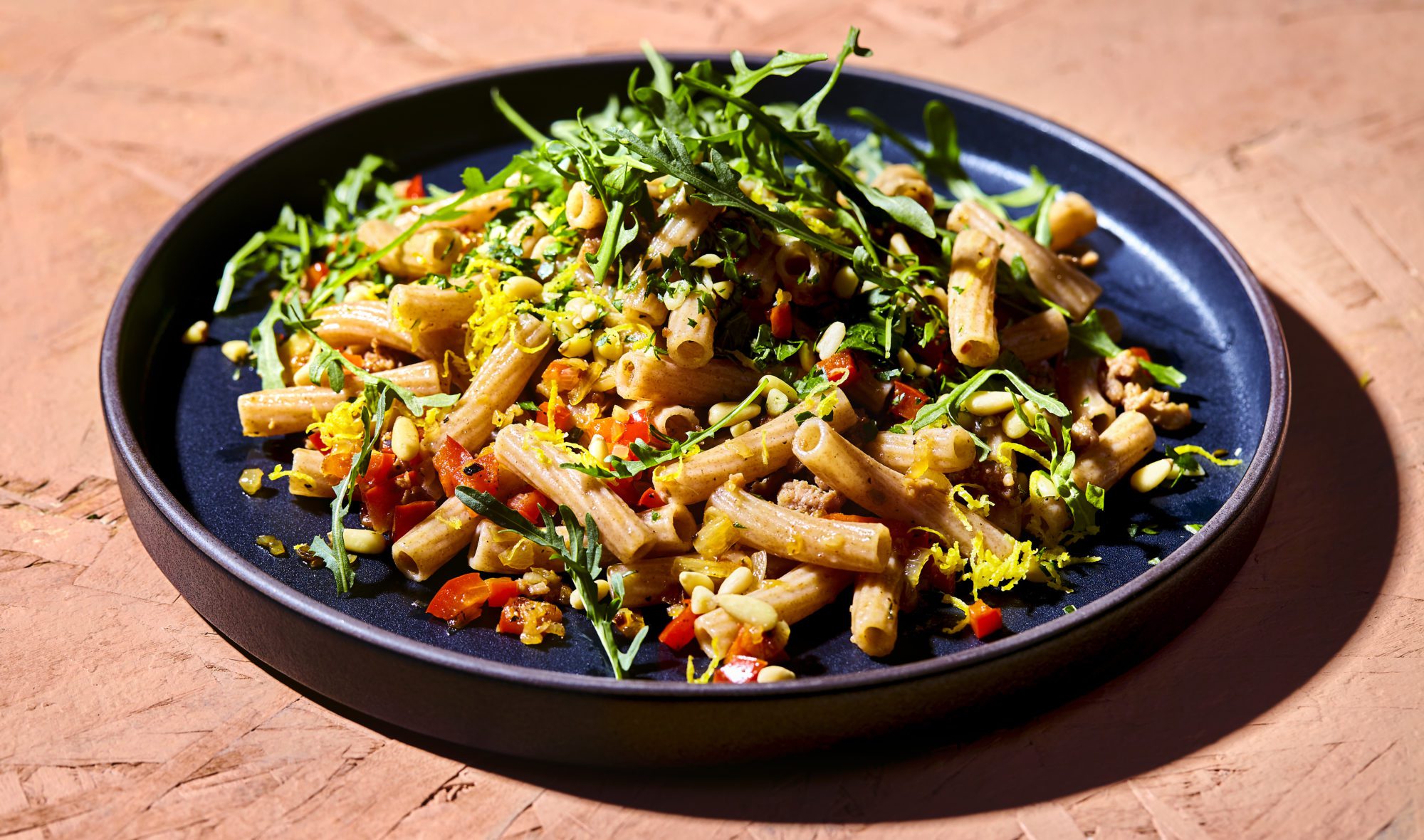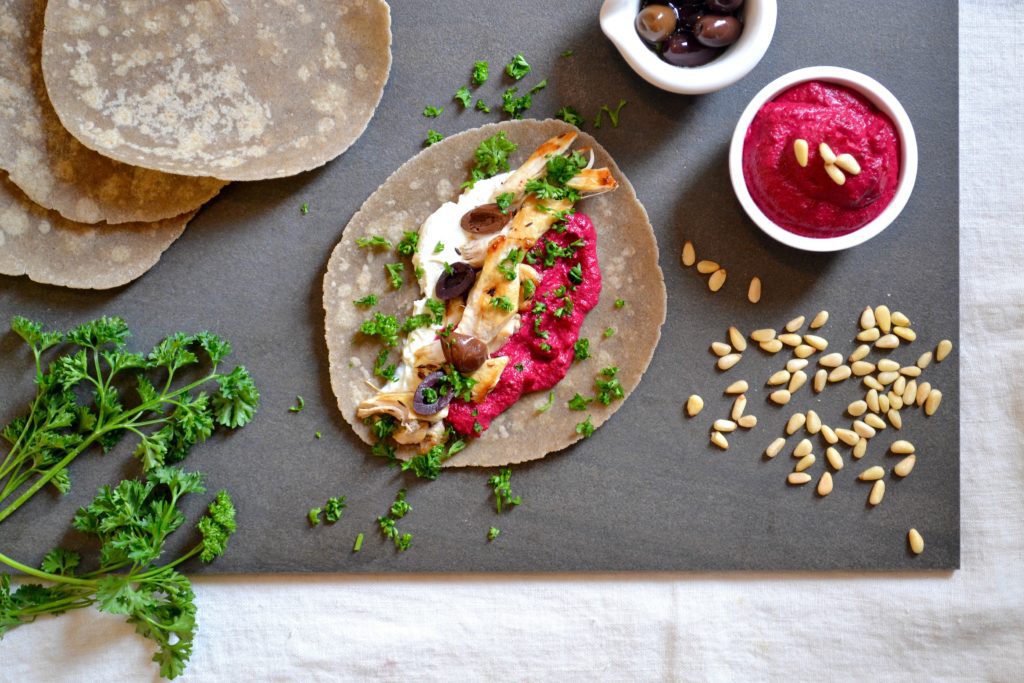
Join PN Level 2 for less than $9 USD/day! Affordable monthly payments now open.

Pine nuts, which are actually seeds, come from pine trees. Covered by hard casings and nestled deep into prickly pine cones, pine nuts take some effort to harvest and extract. This effort partly explains their high cost. Pine nuts are grown in North America, Europe, and Asia, and depending on their species of origin, may vary in terms of appearance. Some pine nuts are large and meaty, others are long and slender, and still, others are stubby and round. All pine nuts have a delicious, rich flavor; they are sweet, buttery, and nutty. Pine nuts are rich in fat and in nutrition, being a good source of phosphorus, manganese, magnesium, vitamin E, and zinc. Pine nuts are prone to rancidity so make sure to purchase them from quality purveyors and store them properly. Pine nuts are used most famously as a key ingredient in pesto and are a favorite snack among squirrels.
Pine nuts, which are actually seeds, not nuts, come from pine trees. All pine trees produce edible pine nuts, although only 18 species of pine trees produce seeds that are large enough to be worth harvesting. Most of these species live in North America, Europe, and Asia.
The cultivation and harvesting cycles of pine nuts are both long and labor-intensive. The pine nuts you are about to turn into pesto actually took years to get to your kitchen:
First, sometime in the spring or summer, a small pine cone bud will form on the end of a spiny bough. For the duration of winter, this pine cone bud, which is about the size of a marble, will lay dormant. The following spring, the bud will renew its growth until it reaches maturity a few months later. At the end of the summer, the mature pine cones are ready to harvest.
Traditionally, pine cones are collected in a burlap bag, and then this bag is left out in the sun for a few weeks to dry out and further mature the pine cones. After drying, this bag of pine cones is whacked with a blunt object in order to break up the cones so they release their seeds. Alternatively, the pine cones can also be individually whacked against a hard object until their seeds loosen.
These seeds, which have a hard brown casing, are then collected and shelled to reveal the soft white portion we call a pine nut.
Depending on the species, this whole cycle can take between 18 months to three years.
Which explains why those little seeds are so expensive.
Depending on the species of pine from which it originated, pine nuts can vary slightly.
In shape, Asian pine nuts are stubbier and rounder and European pine nuts are longer and slenderer. American varieties are usually the largest.
Most pine nuts have a slight teardrop shape and are beige in color, sometimes with a dark nub on the tapered end of the seed.
Pine nuts are softer than most nuts and have a sweet, buttery, nutty flavor. They are very “rich” tasting, likely due to their high fat content.
One ounce of pine nuts (about 28g) has 191 calories, 3.9g of protein, 19.4g of fat, 3.7g of carbohydrates, 1.0g of fiber, and 1.0g of sugar. Pine nuts are an excellent source of manganese and phosphorus, and a good source of vitamin E, magnesium, and zinc.
Due to their high fat content, pine nuts are extremely sensitive to rancidity, which can happen within days to weeks after shelling if they are not stored properly.
To ensure freshness, purchase pine nuts at stores with high turnover and that store their pine nuts in the fridge or freezer. Good quality pine nuts will be smooth and even colored, with no signs of holes or dark spots.
If possible, request to sample some before purchasing. Fresh pine nuts should taste sweet and nutty. If they taste bitter or slightly metallic, they are rancid.
Pine nuts have a relatively short shelf life, and care should be taken in storing them.
Keep pine nuts in a tightly sealed bag or airtight container. When stored in the fridge, they should stay fresh for about a month. When stored in the freezer, they should stay fresh for about three months.
Once the pine nut is separated from the cone and shelled, your work is easy: Just eat them!
Pine nuts don’t need any special preparation and can be eaten as is, like most other nuts and seeds.
Alternatively, they are also delicious blended into dressings and sauces (most famously, pesto), baked into cookies, biscotti, or breads, or simply as delicious adornments to salads or other savory dishes.

Beet mutabbal is a Middle Eastern dip that frequently appears on traditional mezze platters which are composed of small dishes served as an appetizer. Pine nuts are used in place of the traditional tahini to add a unique, luxurious flavor. Mutabbal can be used as a sandwich spread or a dip.
Prep Time: 20 minutes Cook Time: 20 minutes Yield: 4-6 servings
Add steamed beet, pine nuts, garlic, yogurt, olive oil, and salt to a food processor and blend until smooth.
To assemble the pita: Slather pita with beet mutabbal spread and a small dollop of yogurt. Top with chicken, chopped parsley, and a few pitted olives. Fold into a wrap, and enjoy immediately.
Precision Nutrition’s Encyclopedia of Food expands every single month as we highlight new foods and showcase beautiful food photography. If you’d like to stay up to date, simply click this link. From there, we’ll send you a FREE copy of our recipe book. We’ll also let you know when new and delicious foods are added to the site.
Pine nuts, which are actually seeds, come from pine trees. Covered by hard casings and nestled deep into prickly pine cones, pine nuts take some effort to harvest and extract. This effort partly explains their high cost. Pine nuts are grown in North America, Europe, and Asia, and depending on their species of origin, may vary in terms of appearance. Some pine nuts are large and meaty, others are long and slender, and still, others are stubby and round. All pine nuts have a delicious, rich flavor; they are sweet, buttery, and nutty. Pine nuts are rich in fat and in nutrition, being a good source of phosphorus, manganese, magnesium, vitamin E, and zinc. Pine nuts are prone to rancidity so make sure to purchase them from quality purveyors and store them properly. Pine nuts are used most famously as a key ingredient in pesto and are a favorite snack among squirrels.